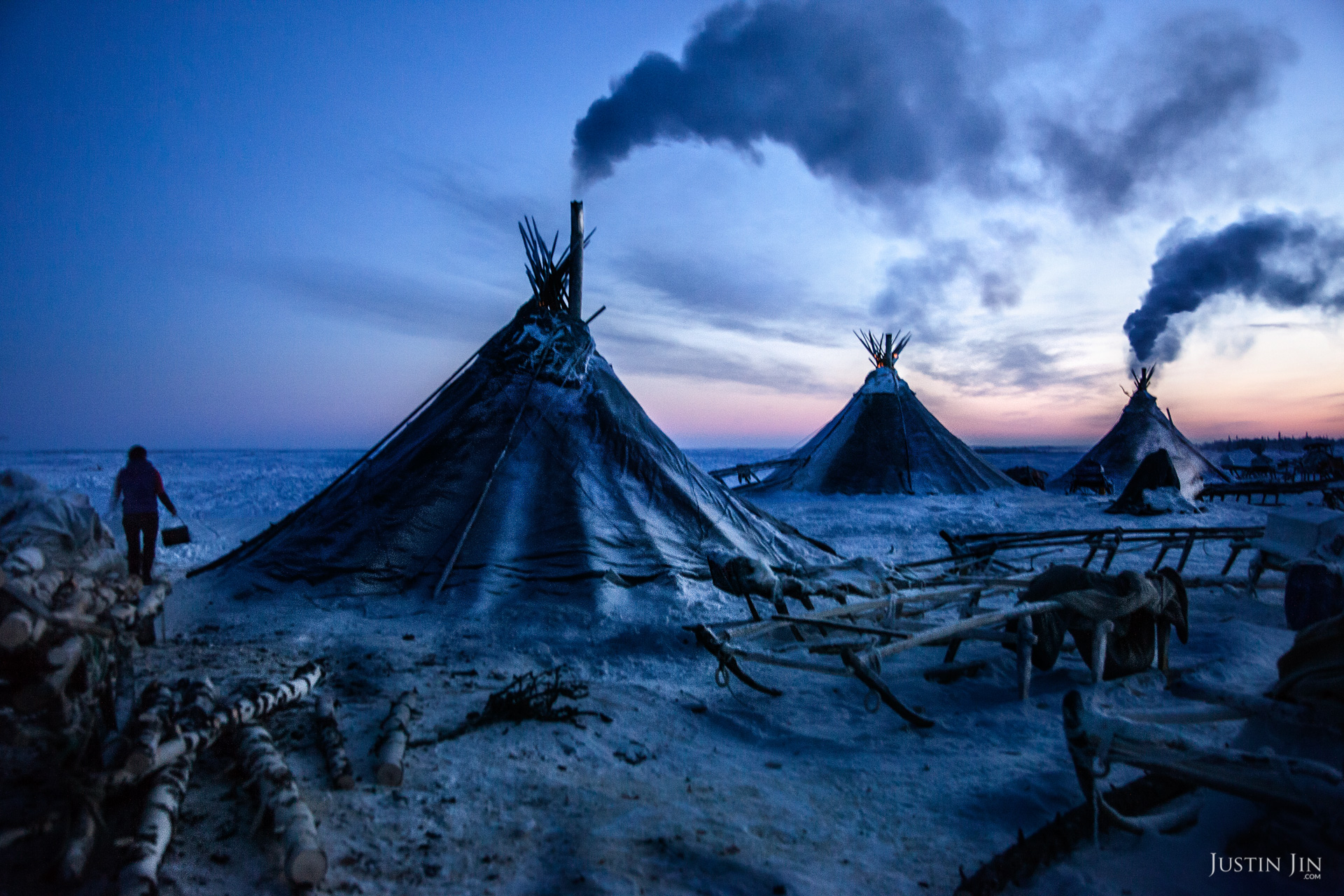

A colony of tents, or "chums", belonging to Nenets herders stand in the Arctic tundra in the Russian Nenets Autonomous Region. The are the original people living in the Russian Arctic, before being crushed by Soviet collectivisation and affected by modern oil and gas exploration.
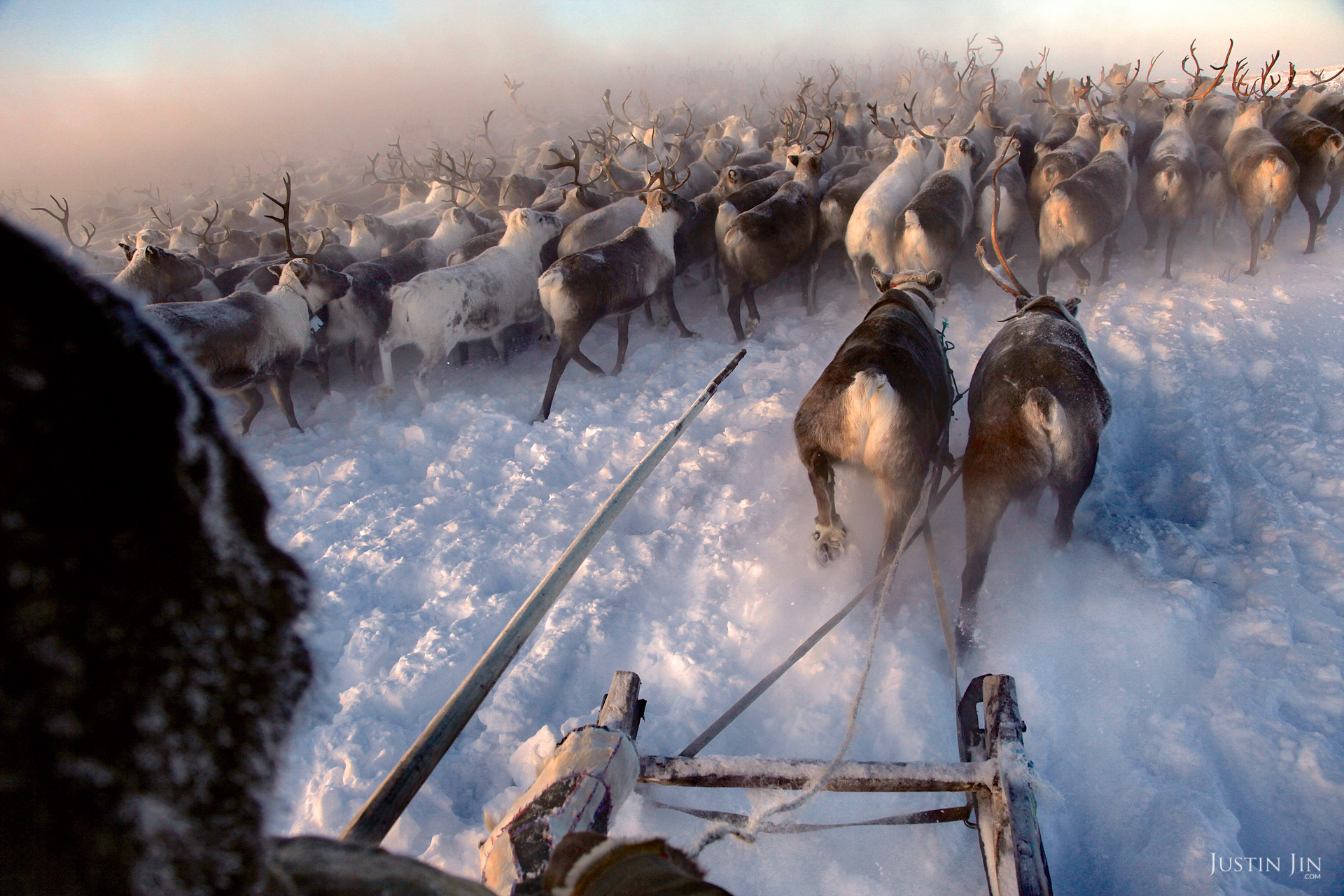

A Nenets herder rounds up his reindeers. The meat is sold to sausage factories and the horns to China for use as aphrodisiacs.
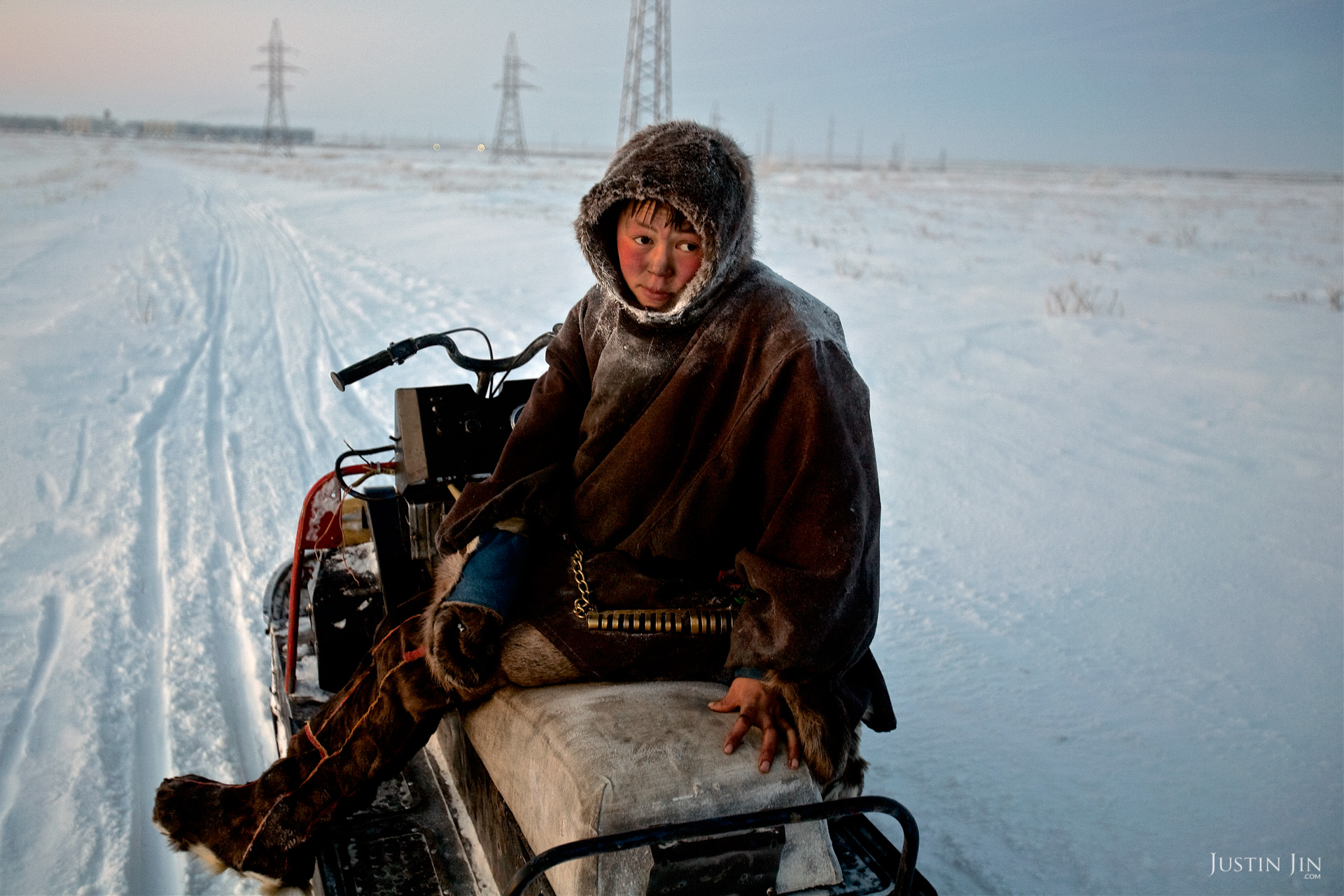

Reindeer herder Simyon travels by sled from his chum towards Vorkuta to buy supplies. Construction of gas pipelines and industrial complexes is threatening the herders’ way of life, forcing them to travel further afield in search of pastures.
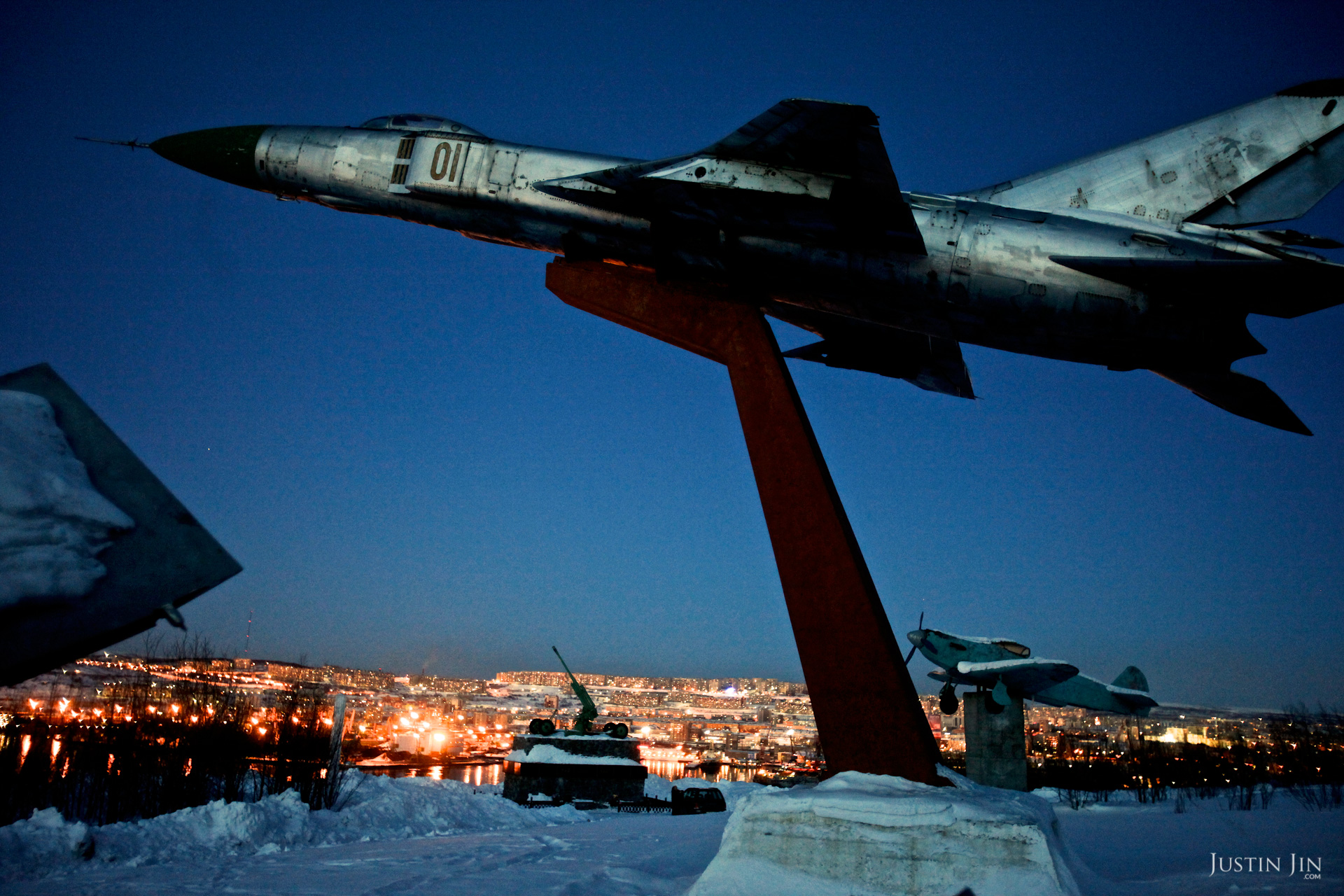

A WWII monument stands above Murmansk, the world's largest Arctic city and a vital industrial and shipping hub. The city became an important military base during the Cold War with Finland and Norway just across the border.
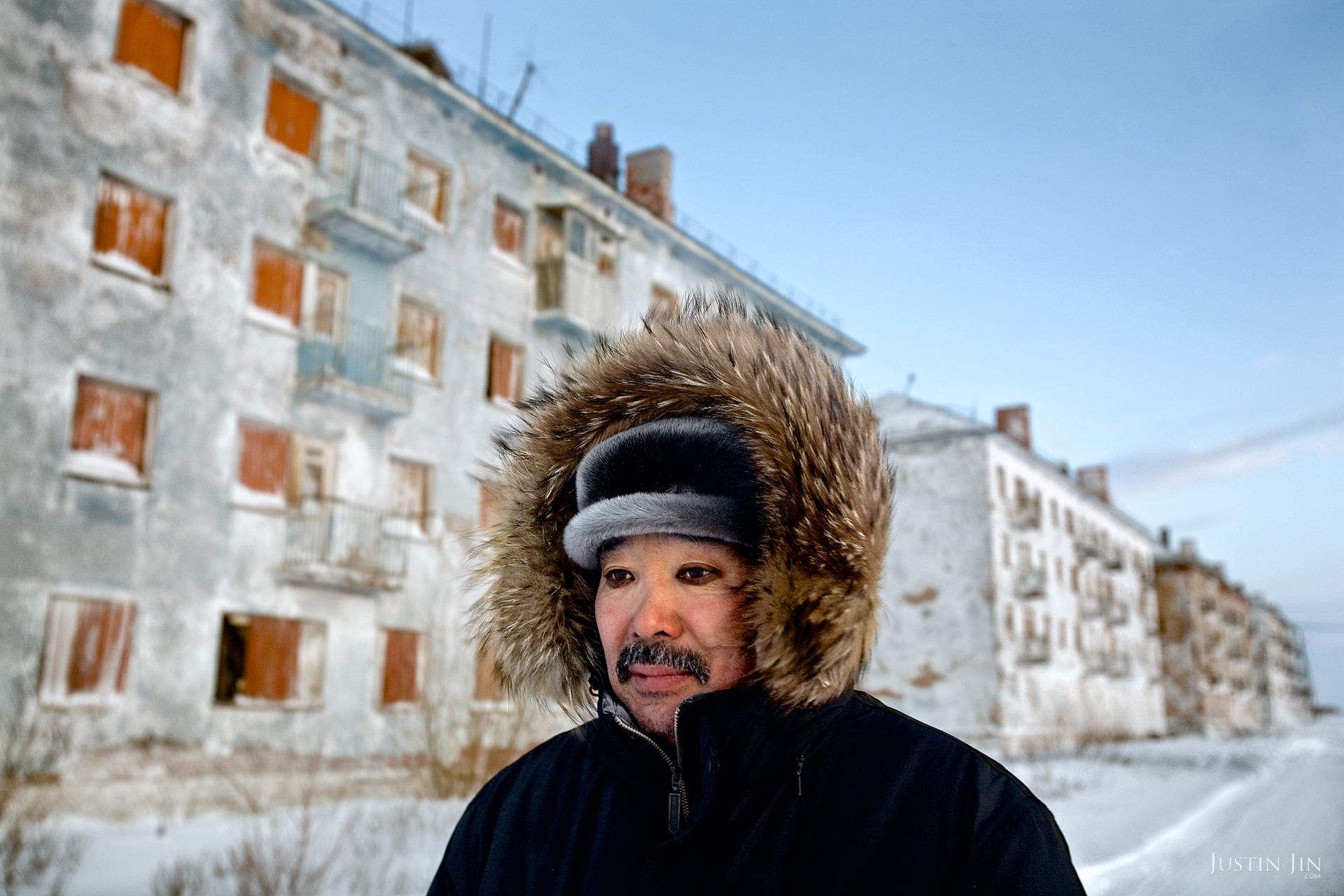

Karp Belgayev, a coal miner, walks through Yor Shor, an abandoned village near Vorkuta where he is among the last ten inhabitants. Miners say that after ten years working underground it is impossible to remove black rings from around the eyes.
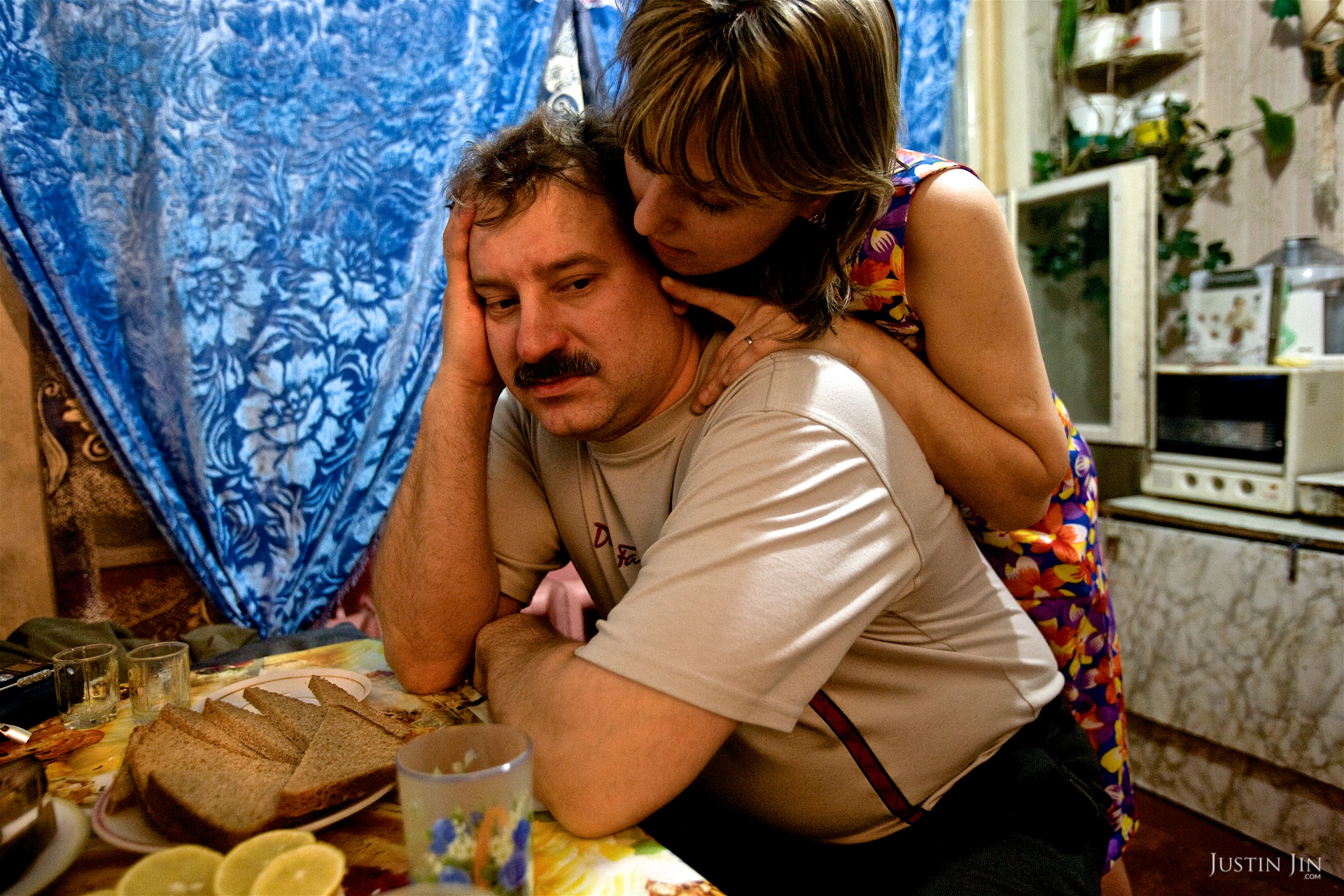

Valery Zhukov, a miner and union representative in Severny village outside Vorkuta, is comforted by his lover Lena.
Vorkuta is a coal mining and former Gulag town 1,200 miles north east of Moscow, beyond the Arctic Circle, where temperatures in winter drop to -50C.
Here, whole villages are being slowly deserted and reclaimed by snow, while the financial crisis is squeezing coal mining companies that already struggle to find workers.
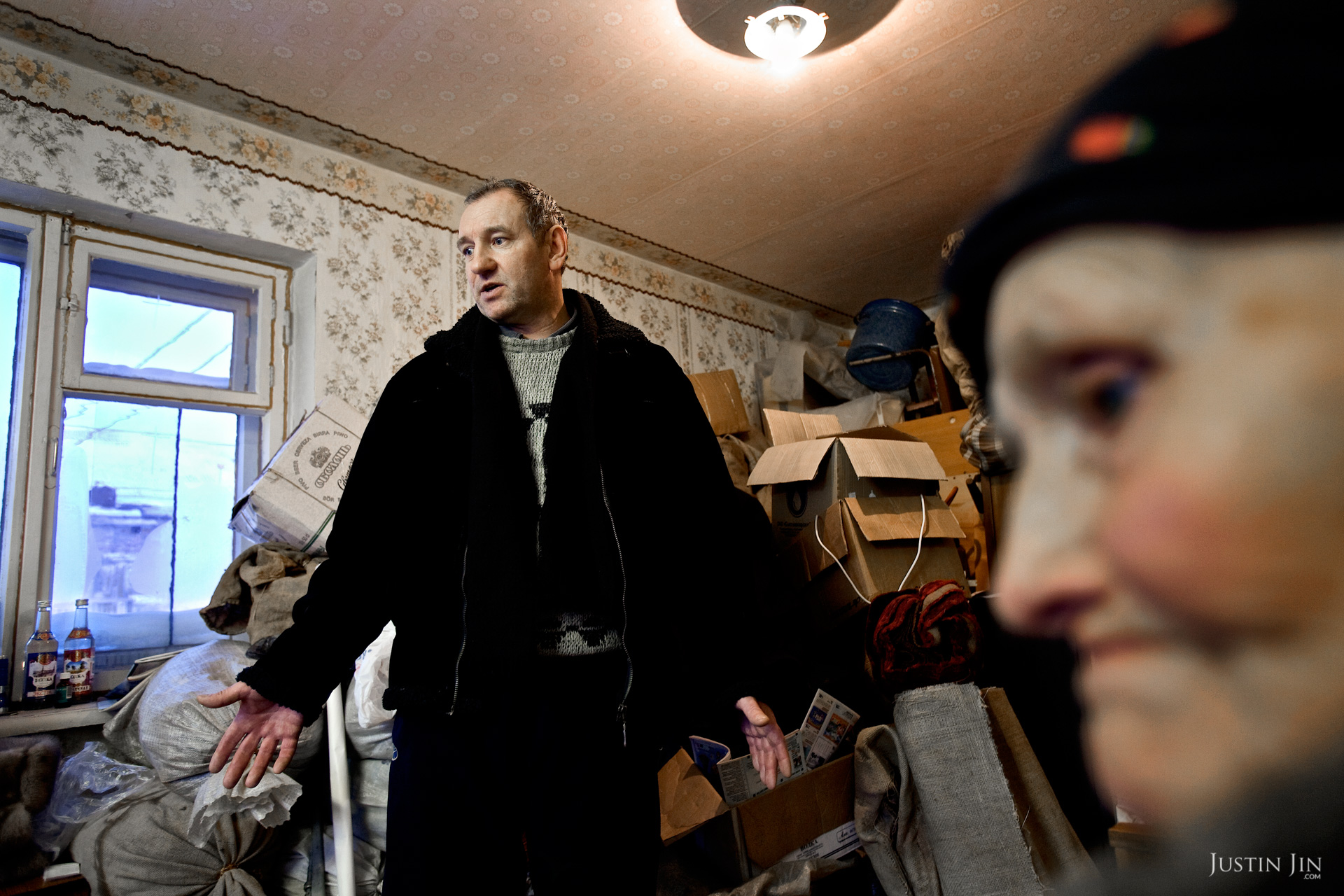

Nina Merzlikina, 75, and Sergei Kostenko, 45, have packed up their belongings at this apartment in Vorkuta, waiting to be evicted. Local officials want to close the village on the city outskirts, so they can shut off supplies of gas and electricity.
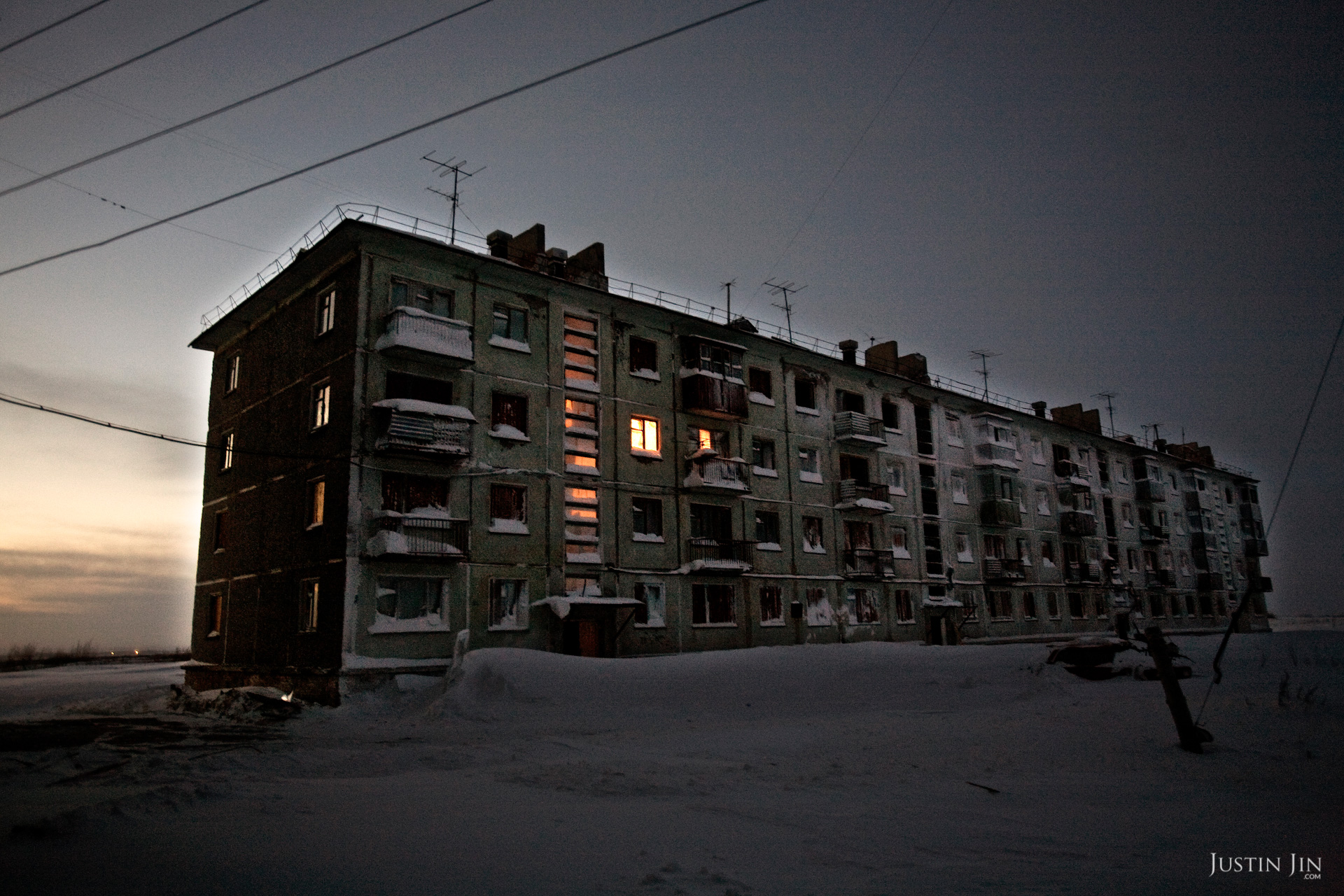

Lights shine from the last occupied flat in an apartment block. With the outside temperature sometimes reaching -40C, the remaining family is at risk of death if the heating is down for just a few hours.
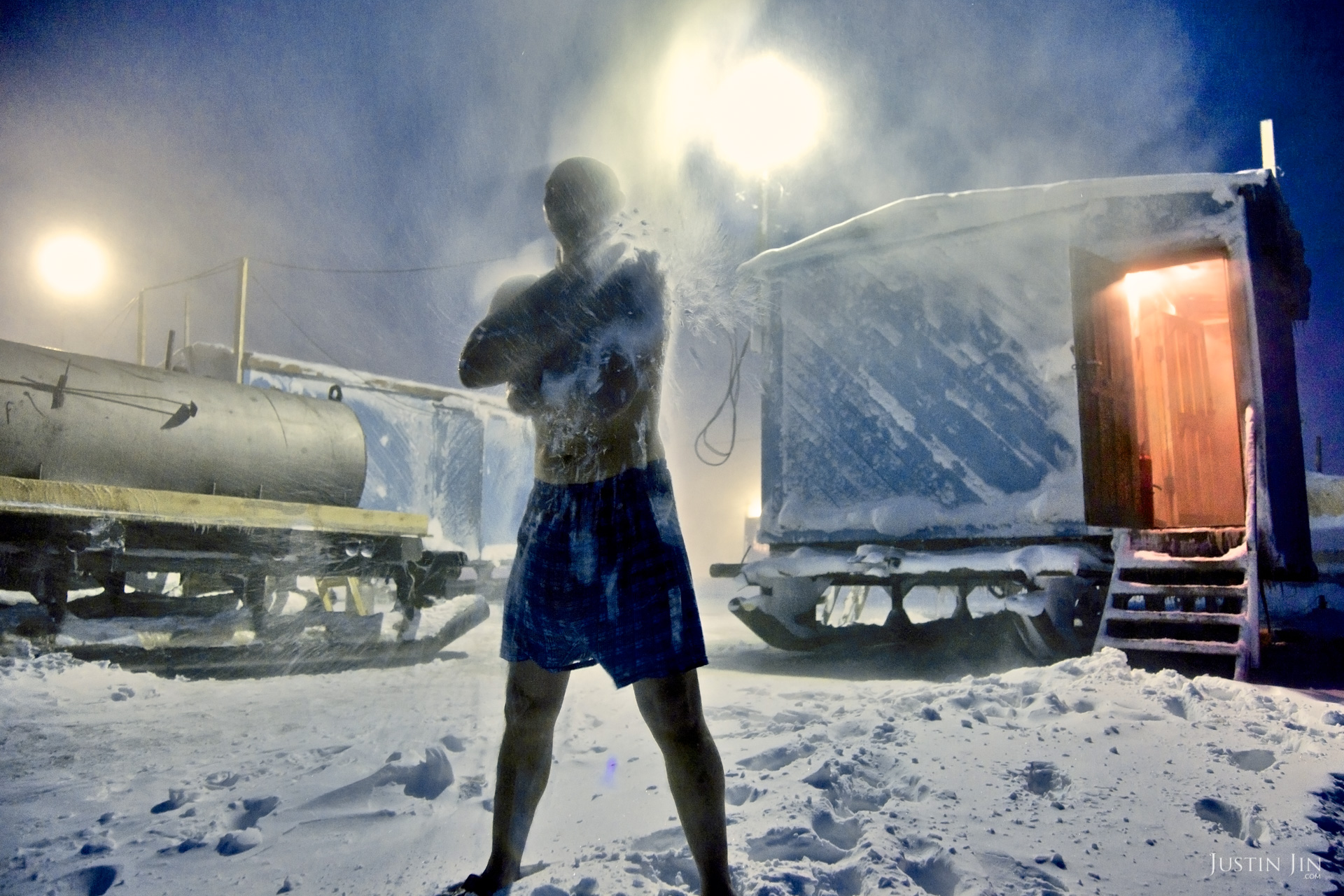

A man working on the frontier of Arctic gas and oil exploration rubs himself with snow during sauna in the Arctic tundra. The water is heated by the diesel tank on the left of the picture. Typically, these men work in the cold, isolated wilderness for the entire winter, returning to civilisation only in spring.
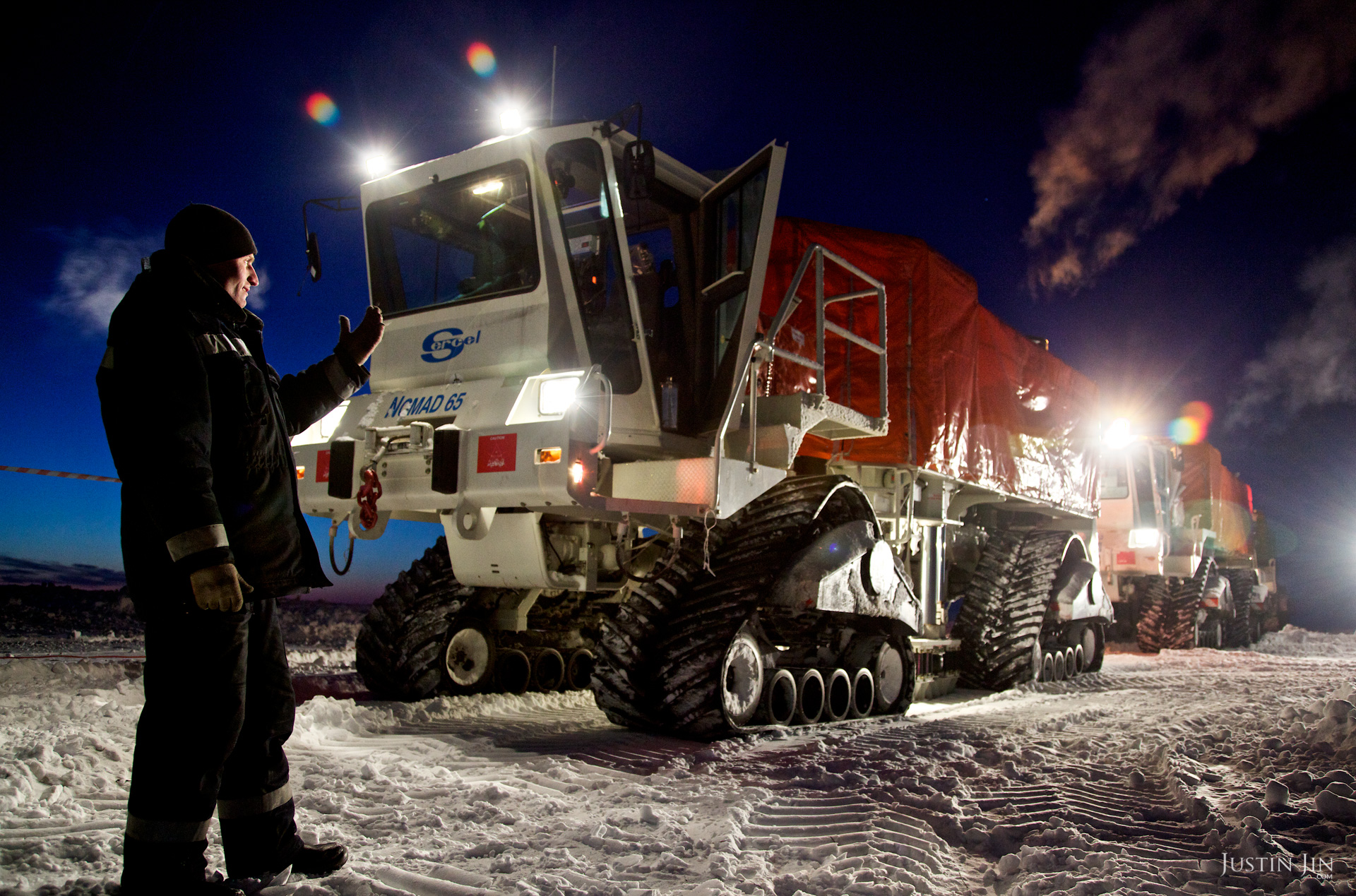

A worker from gas and oil exploration company "Seismorazvedka" guides an all-terrain "Vibrator" in the Arctic tundra in the Nenets Autonomous Region. The vehicle, made by French company Sercel, uses seismic vibration to test the structure of the earth crust below to help prospect for oil and gas. Billions of tonnes of gas and oil have been found in the region in the last decade.
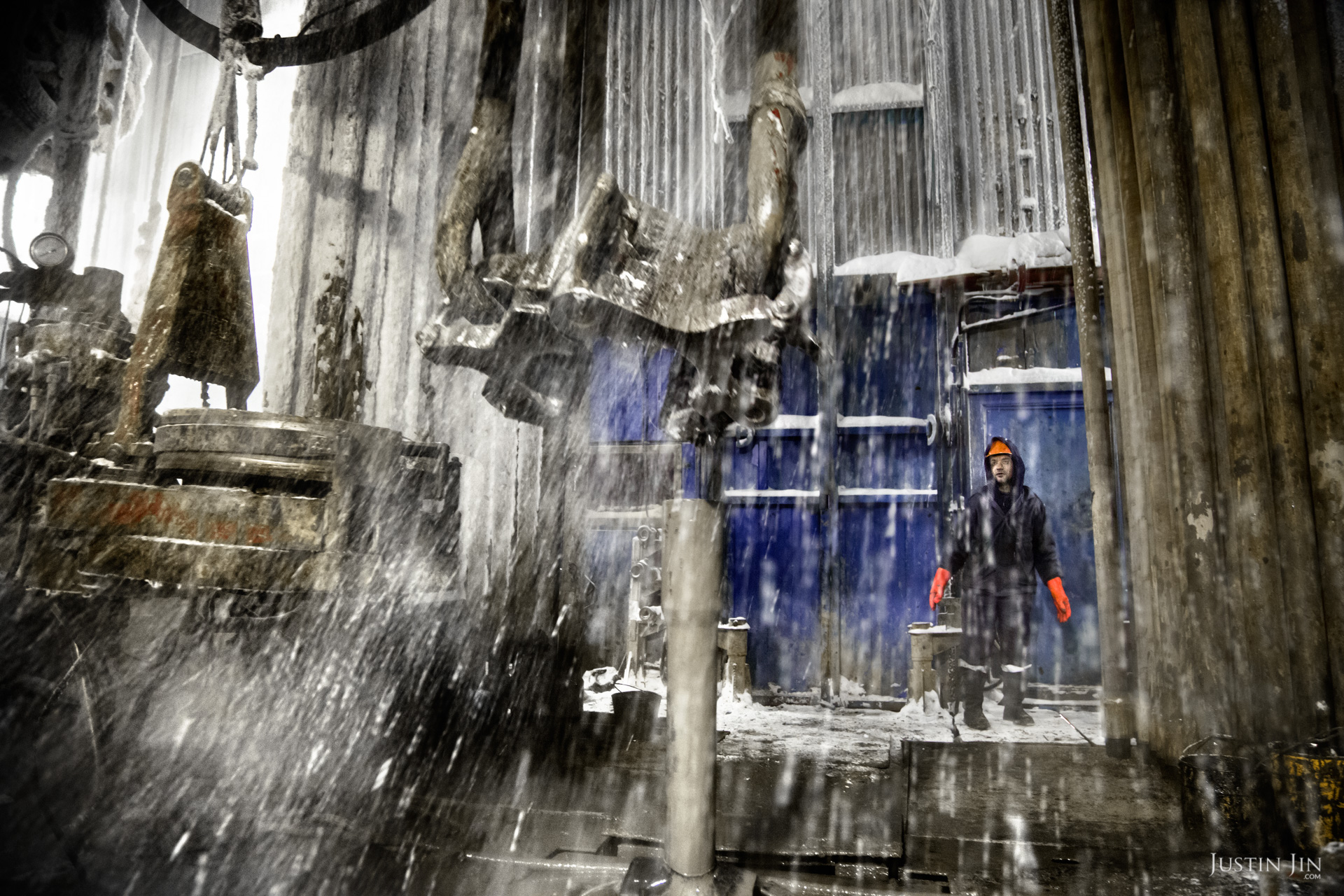

Russian workers at a drilling well in Arctic Siberia, Russia, which has the world's largest gas deposit.
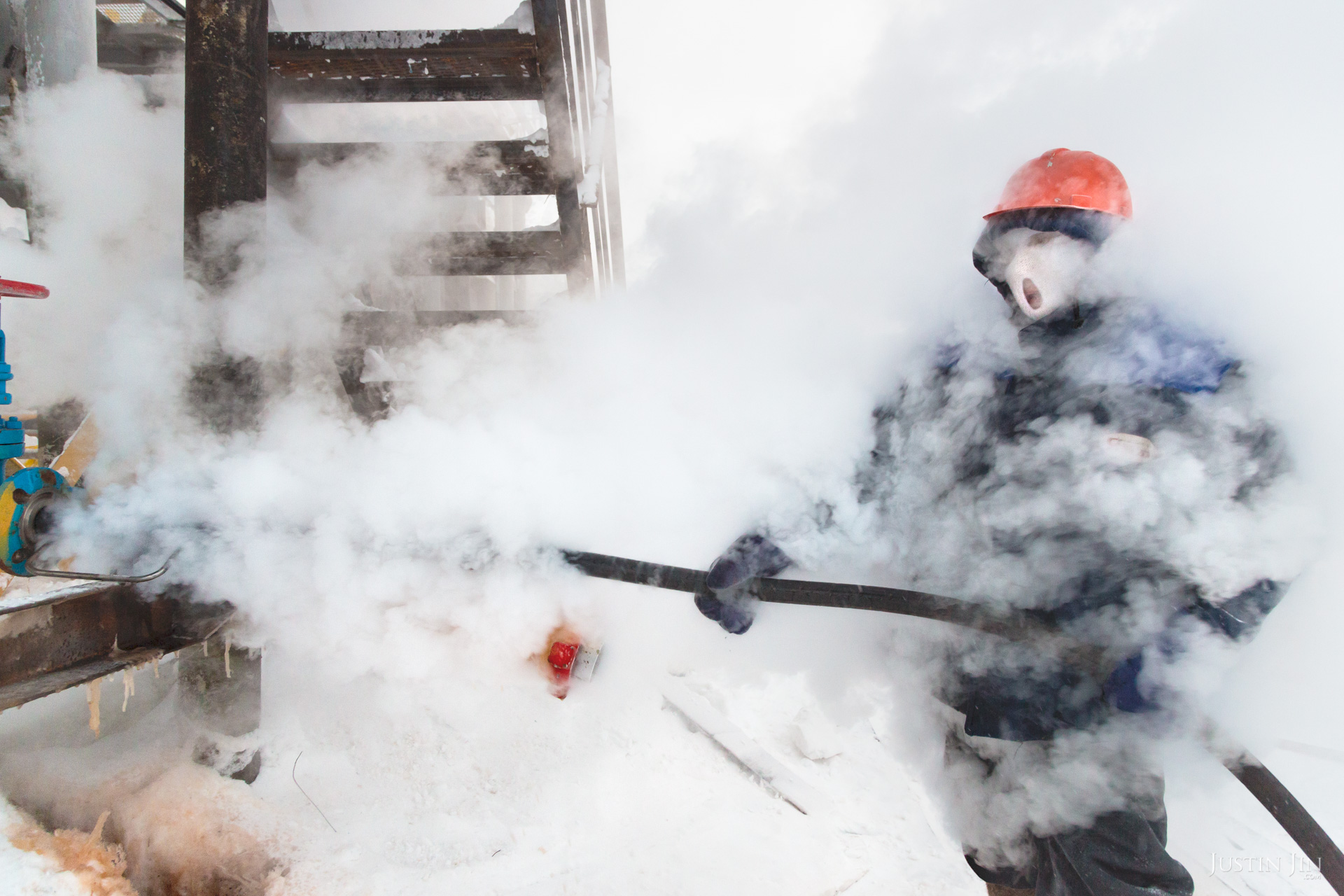

Russian workers at Achimgaz's UKPG gas and condensate processing system spray steam to unfrozen pipes in Novy Urengoi, Arctic Siberia, Russia. Achimgaz is a joint-venture between Germany's BASF Wintershall and Russia's Gazprom.
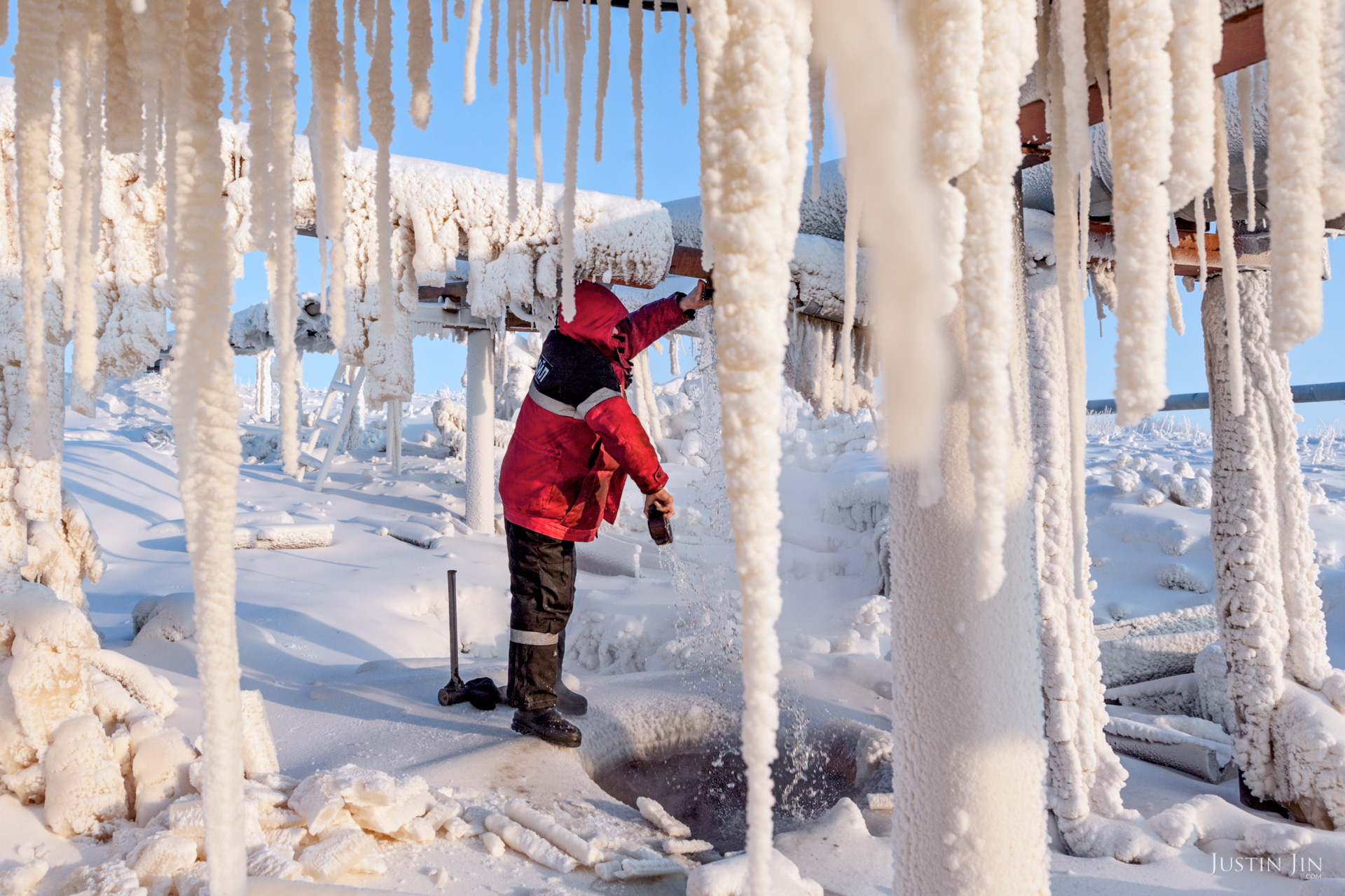

A LUKoil worker repairs a leaking pipe, home to some of the world's largest natural gas deposits.
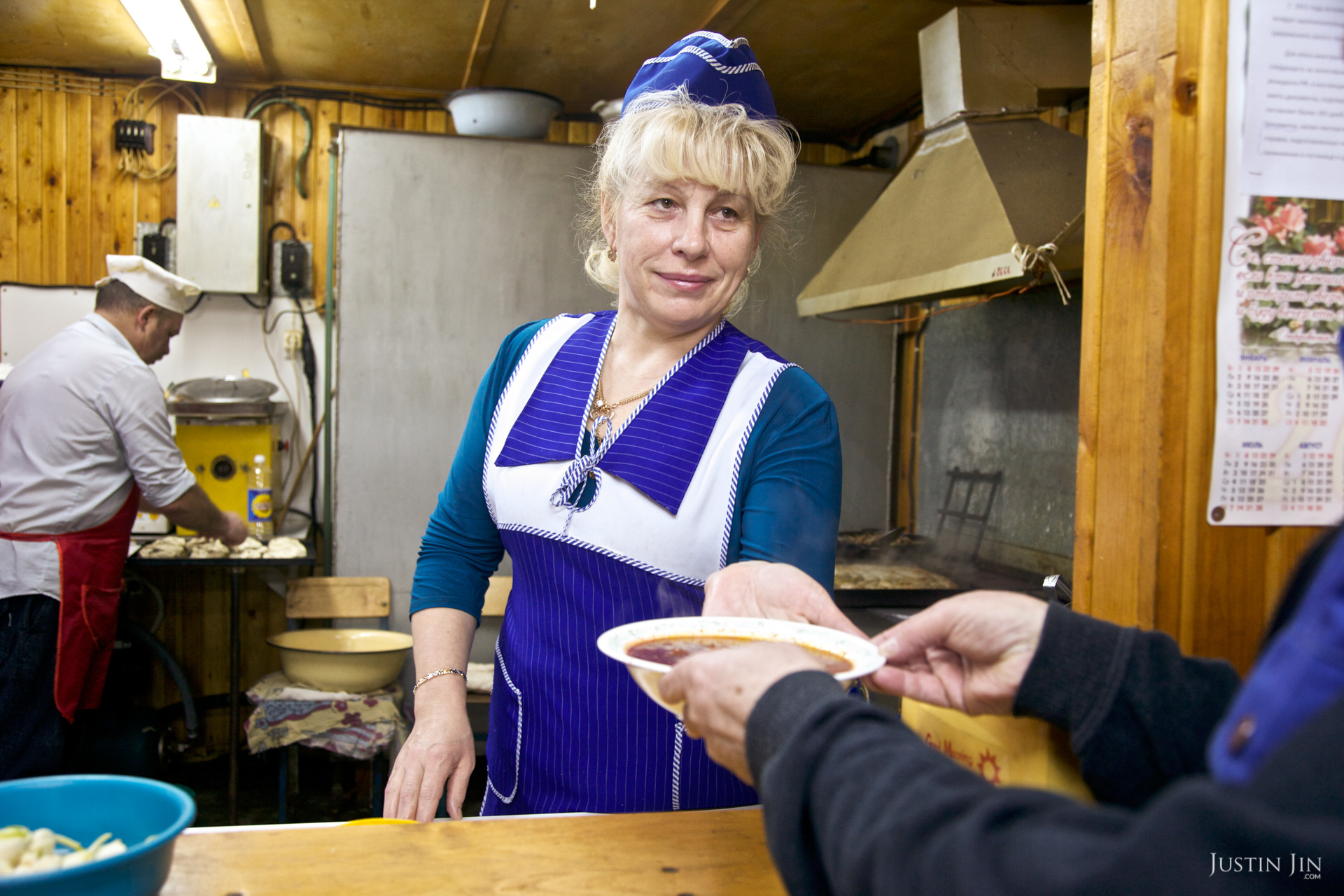

The cooks are the only female on site at the oil and gas prospecting company "Siesmorevzedka" in the Arctic tundra. Typically, they work in the cold, isolated Arctic tundra for the entire winter, returning to civilisation only in spring.


Russian and German gas executives welcome visitors to their base in Arctic Siberia, Russia.
With energy prices tumbling and Russia losing popularity with Europe, oil and gas companies are struggling to bring in new investments.
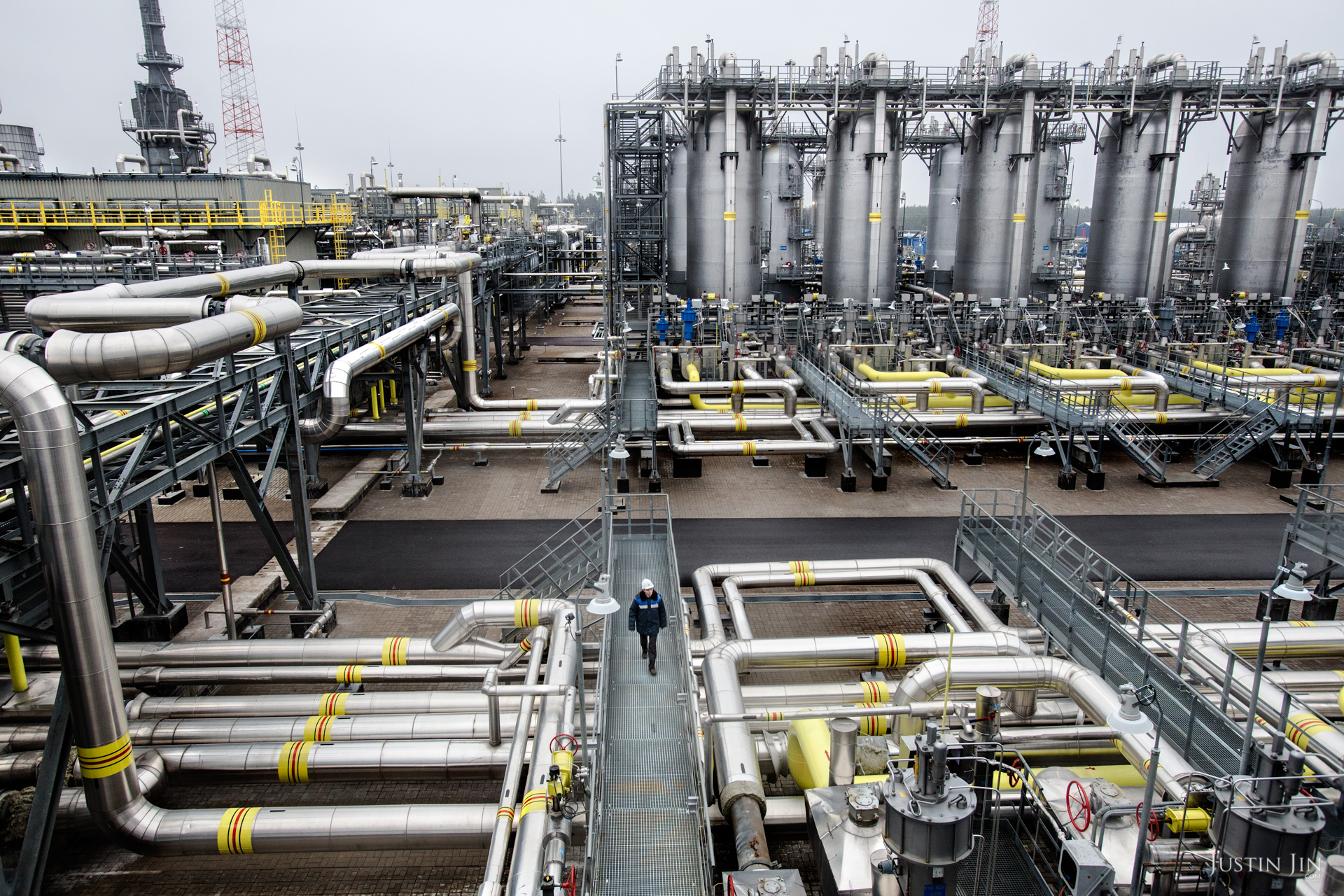

The Portovaya compressor station compresses Russian gas before it is piped across the Baltic Sea bed to supply energy to Europe.
With the recent sanctions over Russia's incursion into Ukraine and tumbling world energy prices, Russia's economy is precarious.
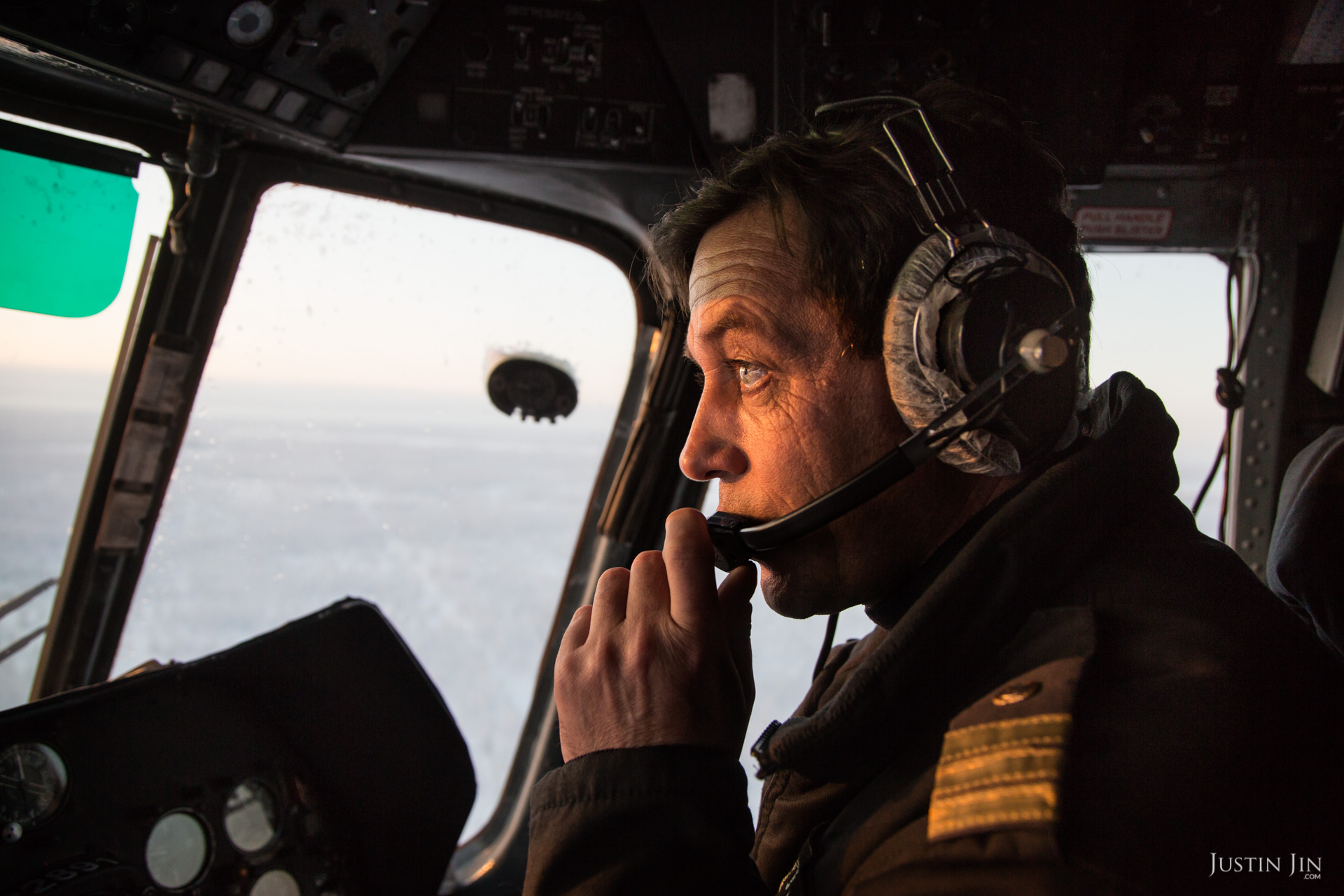

A helicopter pilot flies over gas fields across the Russian permafrost in Russia's Yamal region.
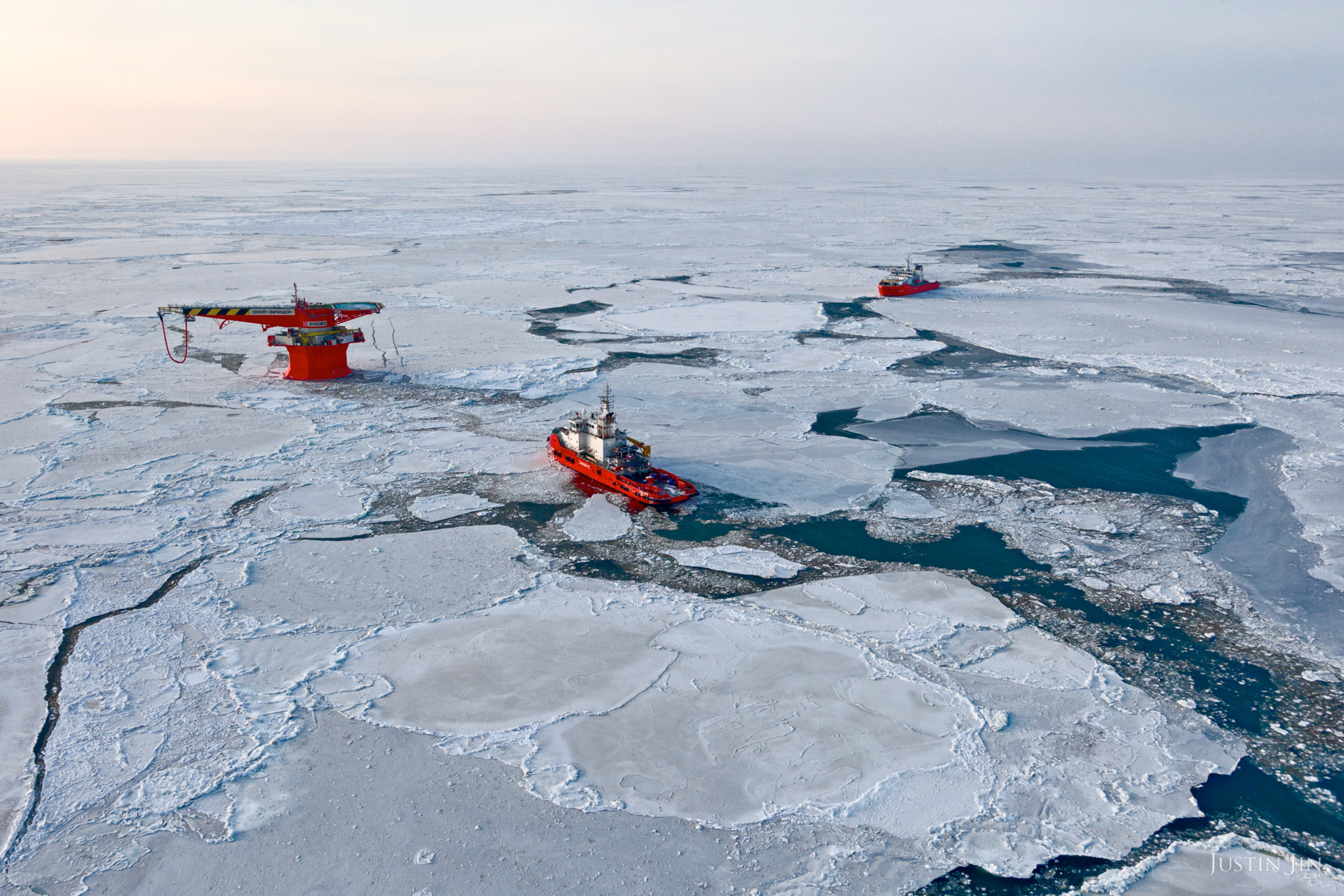

An aerial view of the world's most northerly oil terminal (according to the Guiness Book of Records). The LUKoil terminal, off Russia's Arctic shore, serves tankers using the Arctic route between Europe and Asia, and is another step in Russia's push towards the North Pole. The two boats are ice-breakers working round-the-clock.
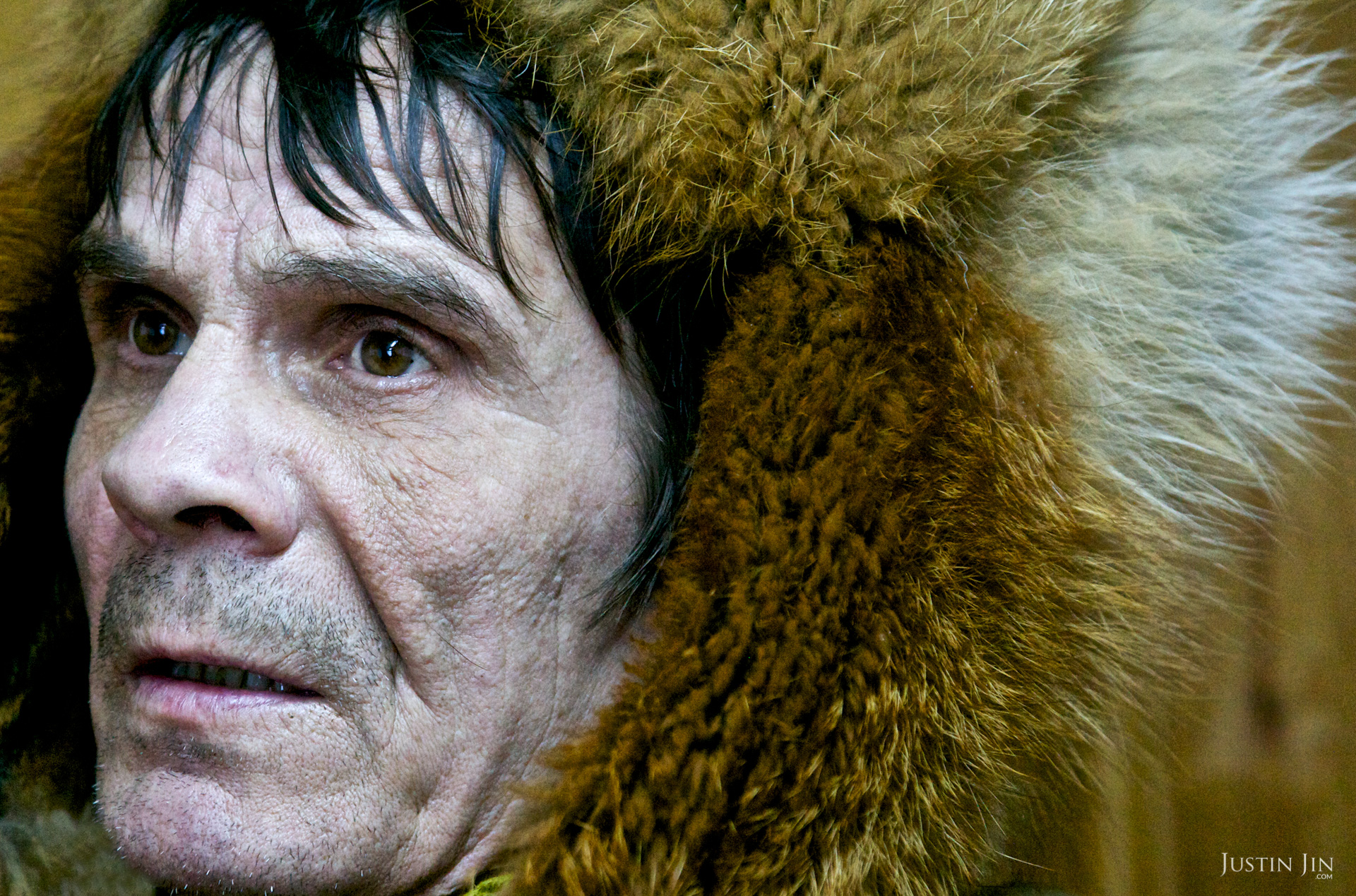

Portrait of Andrei, a tank driver for an oil and gas prospecting company. Drivers typically work in the isolated Arctic tundra for the entire winter, returning to civilisation only in spring.